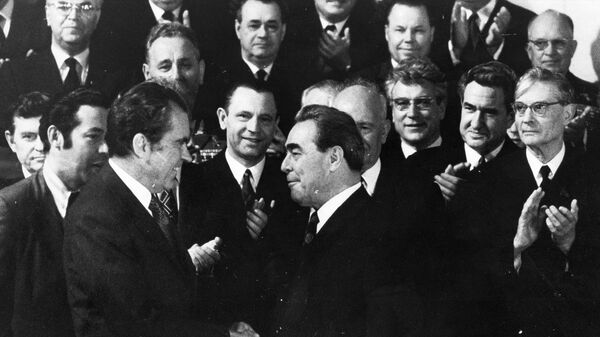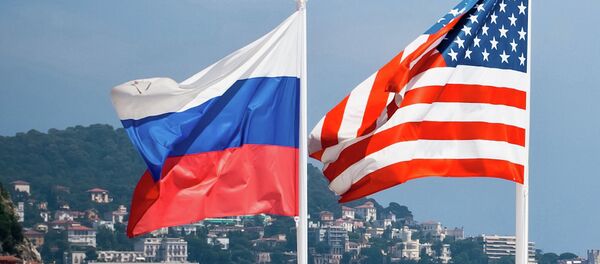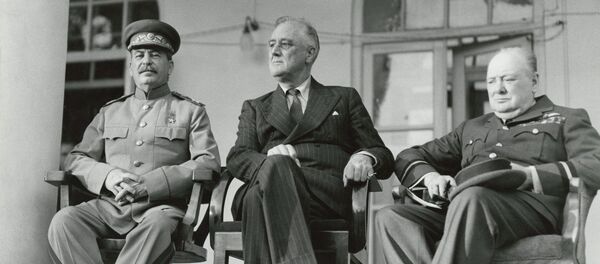The Anti-Ballistic Missile Treaty (ABM Treaty) between the Soviet Union and the United States was signed on May 26, 1972 in Moscow and entered into force on October 3, 1972.
The treaty barred the parties from deploying anti-ballistic missile systems that could cover the entire territory of their countries, or providing a base for such broad-range defense.
The Treaty obligated the parties to limit their deployed ABM systems to two sites: one within a circle of 150-kilometer radius around the national capital, and the other within a circle of 150-kilometer radius around intercontinental ballistic missile (ICBM) silo launchers.
Within each of these sites the parties could deploy no more than 100 ABM launchers and no more than 100 ABM interceptor missiles.
These limitations did not apply to ABM systems used for development or testing, nor those located within agreed test ranges, where each party could have no more that a total of 15 ABM launchers.
In addition, the treaty also limited the number and capacity of ABM radars.
The treaty allowed the deployment of fixed land-based defense ABM systems only. Both counties undertook not to develop, test, or deploy sea-based, air-based, space-based and mobile land-based ABM systems or components.
The parties also agreed not to develop, test or deploy ABM launchers for firing more than one ABM interceptor missile at a time from each launcher, as well as automatic or semi-automatic or other similar systems for rapid reload of ABM launchers.
Compliance with the treaty was to be assured using national technical means of verification in a manner consistent with generally recognized principles of international law.
The treaty was of unlimited duration, but stipulated that each party had a right to withdraw if it decided that extraordinary events related to the subject matter of the treaty had jeopardized its supreme interests.
On July 3, 1974 the parties signed in Moscow a Protocol to the ABM Treaty, which reduced the number of sites to one per party. The Soviet Union pledged not to deploy ABM systems or their components around ICBM silo launchers, and the United States pledged not to deploy ABM systems or their components around the national capital.
For 30 years, the ABM Treaty served as the foundation of the existing system of international agreements on the limitation and reduction of strategic offensive weapons. Russia consistently advocated the continuation of the treaty. Its value has been repeatedly recognized by the international community. For three years in a row, the UN General Assembly overwhelmingly voted for a resolution to support the continuation of and compliance with the ABM Treaty at its 54th, 55th and 56th sessions in 1999-2001.
On December 13, 2001, President George W. Bush announced that the United States was unilaterally withdrawing from the Treaty. On June 13, 2002, the Treaty became invalid.




